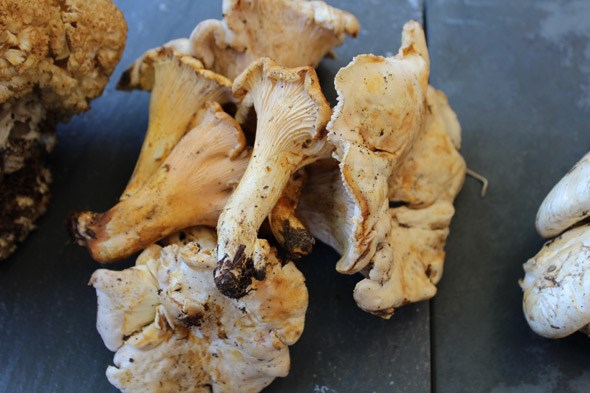This is a mushroom that merits the attention it gets; firm and meaty with excellent aromatic qualities make it stand alone as one of the best fall mushrooms in the Pacific Northwest. When the coastal yellow chanterelles are slimed up after a long rainy period, these white gems stand in the forest just waiting to be scooped up. It seems to me, given the preponderance of neatly sliced stalks littering the forests on the North Shore, that most folks are familiar with the Golden Chanterelle (Cantharellus formosus) but somehow less familiar with the White, Cantharellus Subalbidus variety. This is mostly due to the preference for subalbidus to grow in old growth forests, forming a micorrhizal relationship with conifers, predominantly Douglas Fir.

Identification: Bruising yellow with some yellow discolorations after picking, even a richer orange color may present when sliced or exposed. They often have forking or cross veining “false” gills (they do not readily separate from the cap), and tend to smell fresh and mild to the nose, and are delicate when eaten, one of the most choice edibles. I have also noticed they are more dominant in dryer ecosystems, rather than coastal fog belt conditions. When you see a flag (larger upright specimen) don’t rush in; move slowly and check out the whole area, many younger mushrooms hide in the thick mosses and forest duff, especially with chanterelles. I find the whites at higher elevations with lots of springy forest duff underfoot.
Foraging Words of Wisdom: Mesh or wicker baskets allow spores from your specimens to be distributed in the forest as you walk, try drilling out the bottom of a bucket for a more sturdy container… in effect re-seeding the forest. Keep caps gill side down in basket or container to encourage this release of seed.
View the archive of Wildly Delicious foraging features HERE


